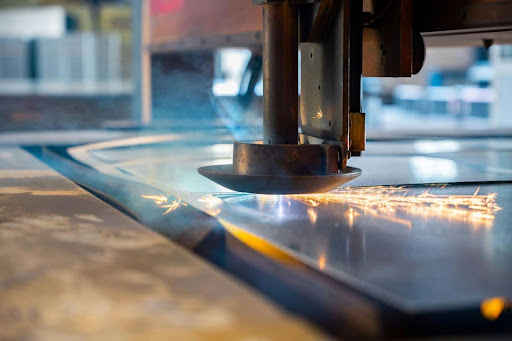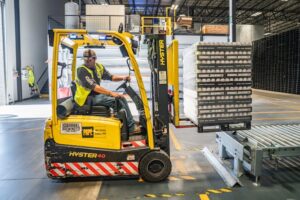Artificial intelligence is increasing in various sectors, including photonics. AI enthusiasts in multiple fields are excited to see how its integration with laser cutting technologies will lead to a significant forward step in manufacturing and industrial design.
This fusion addresses the long-standing inefficiencies of traditional laser cutting and simplifies complex processes. It’s also paving the way for novel applications across the most diverse industries.
Challenges Faced by Traditional Laser Cutting
Laser cutting has long been a manufacturing pillar as metals, plastics and other materials are shaped precisely for various uses. However, the traditional methods are hindered by issues of efficiency and quality.
Traditional models rely on separate and often complex testing procedures to ensure the accuracy of each cut and weld. These processes are normally time-consuming and increase production costs due to high reject rates and wasted materials. This is often seen in industries like electric vehicle (EV) manufacturing, where utmost precision is required and results cannot be inspected immediately in real time.
Traditional laser systems are also considered limited. Customization of product settings for different materials or designs is complicated and usually requires manual intervention. This slows operations and increases errors as the systems rely on workers to input necessary data. These inefficiencies have pushed for the need for more ingenious, automated solutions.
How AI Simplifies Laser Cutting
Automation, precision and efficiency are among the previously unattainable things AI is introducing. Here are three critical ways AI is optimizing the design and execution of the laser cutting process.
1. Real-Time Quality Monitoring
Integrating AI-powered sensors now advances the laser cutting process, as results can be monitored with each cut. For example, TRUMPF’s collaboration with SIMa.ai has resulted in optimized sensor technology capable of analyzing over 3,000 images per second. This instantaneous quality inspection ultimately shortens the production time, eliminating the need for a separate testing phase.
When applied to EV production, this revolutionary technology allows manufacturers to monitor weld quality on the fly, reducing reject rates and enhancing product consistency. Sensors that leverage AI are expected to lower production costs and, by extension, make products more affordable for the market.
2. Internet-Based, On-Demand Manufacturing
The internet has made personalization and on-demand manufacturing a reality. There is no need for 24/7 human intervention as the system is now fully autonomous.
“Researchers at the University of Tokyo developed an independent data acquisition system aptly named the Meister Data Generator.This system uses AI to control laser production remotely”
Users can create designs from anywhere, thereby revolutionizing the manufacturing industry. Production can now be decentralized, offering never-before-experienced levels of customization and further reducing transportation costs.
3. Big Data and Machine Learning Integration
Big data analytics and its application in laser cutting are another transformative contribution to the field. Researchers at the University of Tokyo and Kyushu University exemplified how AI systems can analyze massive datasets, which they used to better understand the laser-material interaction.
In the case of laser ablation – a process where brief pulses of light remove material – AI systems can generate around 1,000 high-quality data points in just a day. These datasets are invaluable in the refinement of the laser-cutting process. Precision is improved, and the capabilities of laser technology are expanded. This is especially beneficial for industries such as semiconductor manufacturing, where precision is necessary at an astonishing scale where measurements are at the nanometer level.
Applications Across Industries
The impact of AI-driven laser cutting extends beyond manufacturing. When applied to the EV industry, this cutting-edge system addresses the dire need for precise particle detection and control in the production of EV batteries. In semiconductors, AI can improve precision in material processing, crucial for creating next-generation microchips.
“Another contribution that AI enthusiasts are looking into is how AI-enhanced lasers transform data centers by enabling high-speed optical interconnects that allow large amounts of information to be transmitted quickly.”
These innovations are critical in powering edge computing, 5G/6G tech and beyond, reducing latency and promoting energy efficiency.
Personalized and decentralized marketing can also lead to a surge in creative applications. Internet-based laser systems democratize manufacturing by allowing individuals and even small businesses to create custom products in demand. Imagine access to creating bespoke jewelry and personalized medical devices without the need for large-scale factories.
This AI-powered laser system also benefits the scientific research community, especially in material sciences. Large datasets can now be analyzed rapidly, unlocking new insights into laser-matter interactions. As scientists better understand such interactions, this application can further breakthroughs in precision manufacturing and advanced material studies.
A Glimpse Into an AI-Powered Future
As artificial intelligence and laser technologies converge and continue to evolve, their integration will likely yield even more innovative applications. Future advancements include:
- Smarter manufacturing ecosystems: Imagine fully automated factories with AI-driven technology that communicates with other systems without human intervention.
- Sustainability improvements: Reduced waste and lesser energy consumption can be realized thanks to precise and AI-optimized material use.
- Advanced health care applications: High-precision lasers are groundbreaking for medical procedures such as tissue ablation, resection, vaporization or device fabrication.
- Data processing and telecommunications: This synergy can further the rapid growth of AI-driven robotics, autonomous vehicles and even power smart cities.
AI is proving to be the most versatile technology ever invented. This technology is transforming how things are made and reimagining what could be possible. A new era has arrived, and AI-driven lasers are the tools shaping tomorrow’s brighter, more connected world.










